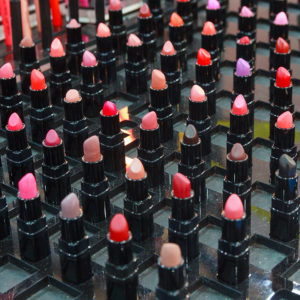In the beauty industry, safer and cleaner products are no longer “niche.” In fact, the segment is growing globally nearly three times as quickly (10 percent) as the industry overall (3.8 percent). In the United States, disruptive approaches to formulating, marketing and distributing cosmetic and skin-care products have put clean beauty companies at the forefront of a $62 billion industry.
But for clean beauty businesses in the United States to truly thrive in a competitive market — either domestic or global — we need a new regulatory framework.
Federal regulation of the U.S. beauty industry lags far behind that of other countries. Our oversight laws amount to one and a half pages written in 1938, and we haven’t passed a major federal law regulating cosmetics since. Unlike in Europe and Canada, the substances used in beauty products sold in the United States do not require vetting for safety. While nearly 1,400 ingredients are banned from personal care products in Europe, only 30 are banned in the United States.
Additionally, a recent report from JAMA Internal Medicine noted rising consumer reports of adverse events related to personal-care products in the United States and called for more surveillance of these products before and after they hit the market. At the same time, an article in the Journal of Obstetrics and Gynecology noted that women of color may be affected more than other groups by the chemicals included in beauty and personal-care products.
Most American consumers assume the Food and Drug Administration has the power to protect them, but it doesn’t. While FDA does research and can make suggestions about ingredients to ban, it has no recall authority. As a result, consumers are using products with potentially harmful ingredients without knowing it — ingredients like phthalates, which are associated with disrupting our body’s natural, delicate hormone system. Phthalates can find their way into perfumes, lotions and cosmetics, yet there is no industry requirement or standard for screening endocrine disrupting chemicals.
Beautycounter, the company I founded, has screened ingredients used to formulate our products for endocrine impacts since day one, and we believe it is critical for such screening to become an industry-wide standard. But wouldn’t it be nice for fast-growing businesses to look to the FDA to do some of this ingredient screening for us?
Because consumers are starved for better beauty products that they can trust, industry leaders are experiencing explosive growth. But we cannot meet this increased consumer demand without stronger regulations. With little guidance from FDA, an unregulated supply chain and a breadth of often-conflicting scientific information to wade through, we’ve had to look to the European Union and Canada for guidance.
It’s often said that regulation can stifle innovation, but we believe new regulation will make it easier for us to bring products to market. Last week, 16 of the leading clean beauty brands joined to form Counteract, a coalition dedicated to improved transparency and accountability in the beauty and cosmetics industry. Together, we represent the largest growing segment of the beauty industry, and we are asking for more regulation, not less.
We want updated federal regulations that empower FDA to review and restrict ingredients linked to possible harm; a public health-protective safety standard by which FDA would review ingredients; timely review of ingredients to bring the U.S. regulatory structure up to the international marketplace standard; increased transparency; and mandatory FDA recall authority.
Many of these changes are included in the bipartisan Personal Care Products Safety Act, reintroduced this spring by Sens. Dianne Feinstein, D-California, and Susan Collins, R-Maine. We know how complicated the issue of regulatory reform is, but we believe these changes are imperative to meeting customer demand for better beauty products and helping companies bring innovative, safer products to market.

